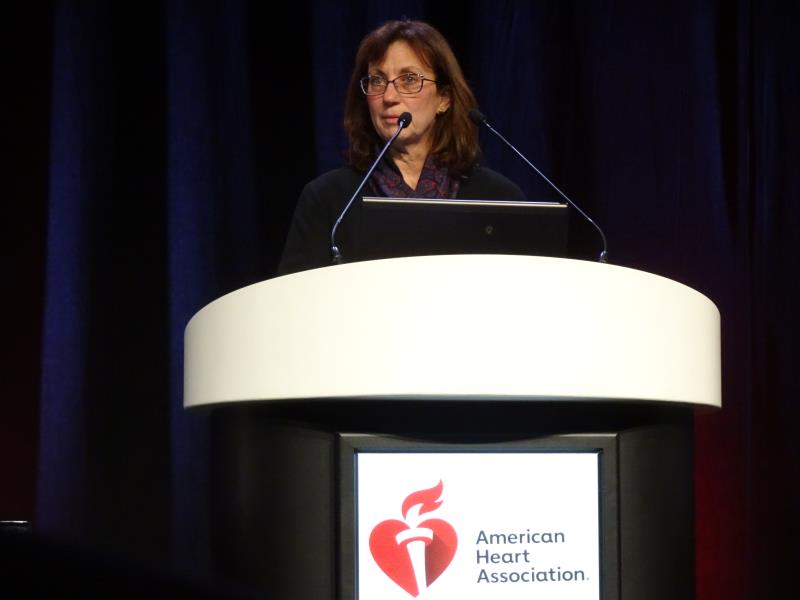 Professor George Dangas
Professor George DangasRivaroxaban treatment after successful transcatheter aortic valve replacement (TAVR) for aortic valve stenosis is linked to an increased risk of death, thromboembolic events, and bleeding in patients without an indication for oral anticoagulation, results of the GALILEO* trial showed.
The 1,644 participants (mean age 80.6 years, 49.5 percent female) in this international, open-label trial were, 1–7 days (median 2.0 days) following successful transfemoral or trans-subclavian TAVR, randomized to receive rivaroxaban (10 mg/day) plus aspirin (75–100 mg/day; rivaroxaban arm; n=826) or clopidogrel (75 mg/day) plus aspirin (75–100 mg/day; antiplatelet arm; n=818) for 90 days. At this point, patients in the rivaroxaban group received rivaroxaban only, while those in the clopidogrel group received aspirin only at the same prior doses.
After a median 17 months, rivaroxaban recipients had a significantly greater incidence of the primary outcome comprising death and thromboembolic events (stroke, myocardial infarction, symptomatic valve thrombosis, pulmonary embolism, deep vein thrombosis, or systemic embolism) compared with antiplatelet recipients (n=105 vs 78; 9.8 vs 7.2 per 100 person-years; hazard ratio [HR], 1.35, 95 percent confidence interval [CI], 1.01–1.81; p=0.04). [AHA 2019, LBS 3; N Engl J Med 2019;doi:10.1056/NEJMoa1911425]
Rivaroxaban recipients also had a higher incidence of cardiovascular (CV)-related death or any thromboembolic event compared with antiplatelet recipients (7.8 vs 6.3 per 100 person-years; HR, 1.22, 95 percent CI, 0.89–1.69).
There was a trend toward increasing VARC**-2 major, disabling, or life-threatening bleeding risk among rivaroxaban vs antiplatelet recipients (n=46 vs 31; 4.3 vs 2.8 per 100 person-years; HR, 1.50, 95 percent CI, 0.95–2.37; p=0.08), as well as a higher risk of all-cause mortality in rivaroxaban recipients (n=64 vs 38; 5.8 vs 3.4 per 100 person-years; HR, 1.69, 95 percent CI, 1.13–2.53; p=0.009). However, the mortality rate differences were attenuated in the on-treatment analysis and occurred late after study drug discontinuation, said Professor George Dangas from the Icahn School of Medicine at Mount Sinai, New York, US, who presented the findings at AHA 2019.
Unsuitable strategy in elderly patients?
“These results underscore the challenge of antithrombotic therapy in the TAVR population, which includes patients who are generally elderly, potentially frail, or affected by multiple coexisting conditions associated with an increased risk of both bleeding and thromboembolic events,” said the authors.
As the deaths were not due to the elevated bleeding risk with rivaroxaban, the mechanism underlying the higher mortality rate in the rivaroxaban arm remains unclear, said Dangas. Additionally, although the GALILEO-4D substudy demonstrated a lower incidence of subclinical valve-leaflet thickening and reduced leaflet motion with rivaroxaban compared with antiplatelet therapy, these findings did not lead to benefit with rivaroxaban in the main study, said Dangas and co-authors. [AHA 2019, LBS 3; N Engl J Med 2019;doi:10.1056/NEJMoa1911426]
According to discussant Professor Elaine Hylek from the Boston University School of Medicine in Boston, Massachusetts, US, multiple factors could have contributed to the negative outcomes in GALILEO.
These include the patient population, dosing strategy, and timing of intervention, as well as if the thromboembolic events or deaths were related to treatment interruption or discontinuation, or physician response to bleeding, or the presence of an association with atrial fibrillation incidence, she said.
“Rivaroxaban 2.5 mg BID … combined with an antiplatelet may be a reasonable next study … [However,] at the end of the day, in this very medically complicated high-risk patient population with the mean age of 80 years, combination therapy may simply not be feasible,” she pointed out.
 Professor Elaine Hylek
Professor Elaine Hylek